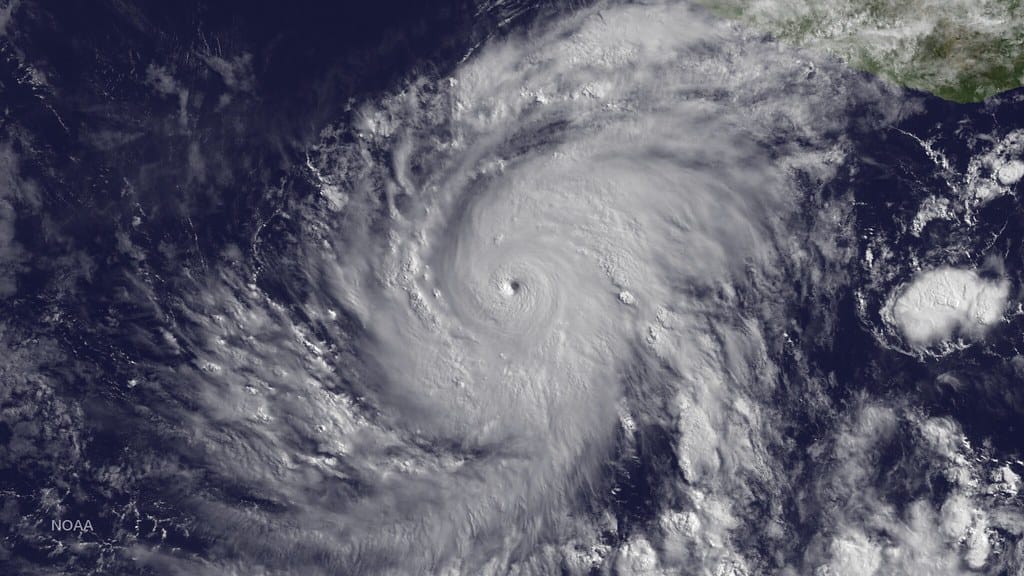Scientists Discover Ocean 'Pressure Point' That Could Supercharge Gulf Coast Hurricanes
A groundbreaking new study has identified a critical oceanic "pressure point" in the Gulf of Mexico that could significantly amplify hurricane intensity, potentially transforming moderate storms into catastrophic weather events that threaten millions along the Gulf Coast. The research reveals how specific underwater conditions create a perfect storm scenario for rapid hurricane intensification.
The Hidden Power Beneath the Waves
Researchers from the National Oceanic and Atmospheric Administration (NOAA) and several leading universities have pinpointed a phenomenon occurring in the Gulf's deeper waters that acts like a turbocharger for hurricanes. The study, published in the Journal of Climate, identifies how temperature differentials and current patterns in a specific region of the Gulf create conditions that can dramatically increase storm intensity in a matter of hours.
The "pressure point" refers to an area where warm surface waters meet cooler deep currents, creating an energy transfer system that hurricanes can tap into as they pass overhead. When storms encounter this zone, they can rapidly intensify from Category 1 or 2 hurricanes to potentially catastrophic Category 4 or 5 systems.
Real-World Hurricane Impact
The research team analyzed data from the past two decades of Gulf hurricanes, finding that storms passing through this pressure point zone intensified 40% faster than those following other paths. Hurricane Michael in 2018 serves as a prime example – the storm underwent explosive intensification while traversing this area, jumping from a Category 2 to a devastating Category 5 hurricane in less than 24 hours before making landfall in Florida's Panhandle.
"We observed similar patterns with Hurricane Ida in 2021," explained Dr. Sarah Martinez, lead oceanographer on the research team. "These storms essentially found a highway of energy that allowed them to reach their maximum potential much more quickly than traditional forecasting models predicted."
The Science Behind the Phenomenon
The pressure point operates through a complex interaction of oceanic conditions unique to the Gulf of Mexico's geography. The region's relatively shallow basin combined with warm waters from the Caribbean creates a heat reservoir that hurricanes can efficiently extract energy from. When hurricanes pass over areas where this warm water extends deep below the surface, they encounter less resistance and can maintain or increase their intensity.
Ocean temperature data shows that water temperatures in the pressure point zone remain 2-3 degrees Fahrenheit warmer than surrounding areas at depths of up to 300 feet. This deeper warm water is crucial because it prevents the cooling effect that typically occurs when hurricanes churn up cooler water from below.
Implications for Coastal Communities
The discovery has significant implications for the 15 million people living along the Gulf Coast from Texas to Florida. Current hurricane forecasting relies heavily on surface conditions and atmospheric factors, but this research suggests that deep ocean dynamics play a much larger role in storm intensification than previously understood.
Emergency management officials are already incorporating these findings into their planning strategies. The research indicates that storms entering the Gulf during peak hurricane season (August through October) have a higher probability of rapid intensification when passing through this zone, potentially giving coastal communities less time to prepare for major hurricane impacts.
Enhanced Forecasting and Preparedness
The study's findings are being integrated into advanced hurricane prediction models, which could improve forecast accuracy by up to 25% for storms affecting the Gulf Coast. NOAA has deployed additional deep-ocean sensors in the pressure point region to provide real-time data that can be fed into forecasting systems.
"This research fundamentally changes how we understand hurricane behavior in the Gulf," said Dr. James Richardson, a meteorologist not involved in the study. "It's not just about what's happening at the surface anymore – we need to consider the entire water column when predicting storm intensity."
Looking Ahead
As climate change continues to warm ocean temperatures, researchers warn that the pressure point phenomenon could become even more pronounced. The study suggests that by 2050, the zone's influence on hurricane intensification could increase by 15-20%, potentially making rapid intensification events more common.
For Gulf Coast residents, this research underscores the importance of early preparation and evacuation planning. When meteorologists issue hurricane watches for the region, the new understanding of this oceanic pressure point means that even seemingly moderate storms could rapidly become life-threatening events.
The discovery represents a crucial advancement in hurricane science that could help save lives and property by providing more accurate predictions of when storms might undergo dangerous rapid intensification in Gulf waters.
